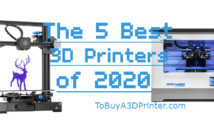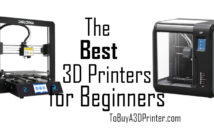3D Printers have a wide area of applications in the real world, ranging from rapid prototyping to the development of prosthetics. 3D Printers for industrial applications generally cost tens of thousands of dollars which is too steep a price for the average consumer. Developments in the past few years have led to the emergence of ‘Cheap 3D Printers’, which have made 3D printing even more affordable.
What Held Cheap 3D Printers Back
Did you know? patents for technology related to 3D printing were filed as early as 1980. According to a UK Government report published by the UK Intellectual Property Office Patent Informatics Team in November 2013, a total of 9,145 patents were filed between 1980 and 2013.

The patents for Fused Deposition Modelling (FDM), a widely used technology in the world of 3D printing, were filed between 1992 and 1994. The term of a patent is for 20 years from its earliest date of filing. Most of the patents related to FDM expired in the years 2013-2014 and many more will expire in the next few years.
The expiry of patents translates to lower 3D printer development costs, no royalties and has spurred more innovation. Simply put, the high end products have become cheaper while the quality remains constant.

Cheap 3D Printers Are Here
Now that the number of available cheap 3D printers has increased, they are an attractive alternative to higher-end 3D printers. It is often the case that cheap 3D printers have similar or equal capabilities of higher-end 3D printers while costing only a fraction of their price. If chosen correctly, a cheap 3D printer will not only give you good prints but will also save you a lot of money.
Let us take a look at the features that are to be considered while choosing a cheap 3D printer.
Multi-Filament Support
In general, different 3D printable objects require different materials. This is achieved by using the appropriate filament for the model. For example, ABS is used for prints which require higher strength. PLA is bio-degradable. Multi-Filament support will widen your choices for printing and enable you to use the correct filament required by the model.
Build Capacity
Build capacity dictates the maximum size of the objects that you choose to print. Larger models can always be printed in multiple smaller parts and assembled later. But this requires more time during the design process and in the finishing stage. Higher build capacity is definitely a plus.

Connectivity
This feature is a deciding factor for most when purchasing a 3D printer. In our mobile world, it can prove difficult to keep your computing device connected to your 3D printer when printing. A printer that is wireless or that has internal or removable storage addresses this issue.
DIY vs Ready to Print
If you are not exactly comfortable with using tools nor have patience to spend hours assembling and tuning your printer, then it is better to choose a 3D printer that can print straight out of the box. However, Do-It–Yourself printers have an edge in terms of hackability. You can add those missing features on your own!

Conclusion
A cheap 3D printer does not necessarily mean that you have to compromise on its features. Cheap simply means that the printer costs. A whole range of printers exist in the price range of $100 to $800 which are not only affordable but also offer most of the features found in higher-end printers.



